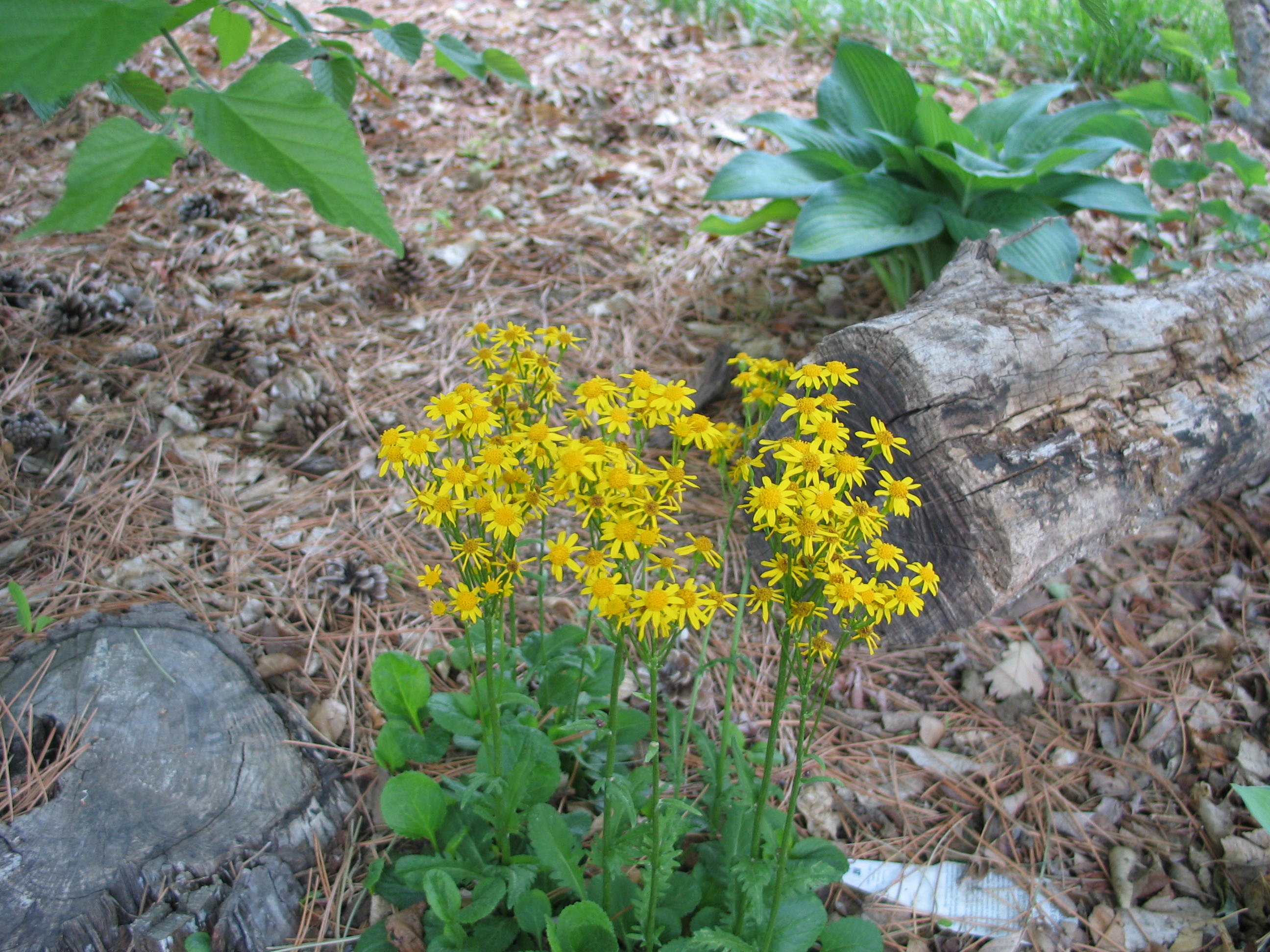One of the great things about native plants is that there is so much diversity found in the prairie. From wet to dry, sun to shade, clay to sand, there is a plant for every place in the landscape. The diversity of plants give us so many options and provides alternatives to what is typically planted in gardens and displays in our area. The non-native plants listed below are coupled with native plant alternatives that make excellent substitutes.
Alternatives for Bugle Weed-Ajuga Cultivars
- Ater divaricatus ‘Eastern Star’ (White Woodland Aster): This native aster has small white flowers with pink centers that cover the plant in fall. The attractive foliage is dark green with burgundy highlights. It slowly creeps to fill in an area, but it is not aggressive. This is a nice plant for full to part shade.
- Asarum canadense (Wild Ginger): This native of the woods is quite adaptable, but prefers rich organic soils. Wild ginger spreads slowly to form colonies. Plant these about a foot apart and they will form a solid ground cover in two or three years. These will not grow in sun. The kidney shaped leaves are a soft-green and often cover the flowers, which are brownish and bell shaped.
- Senecio obovatus (Squaw-weed): I love this woodland native because it looks good all year long. The rounded dark green foliage is semi-evergreen. It is a weaver as it spreads to fill voids in a shaded or part shade situation. The yellow flowers brighten the shade garden in the spring.
Alternatives for Barberry – Berberis spp.
- Physocarpus opulifolius ‘Little Devil’ or ‘Tiny Wine’ (Ninebark): We have been growing Ninebark here at the arboretum for many years with great success. It is quite adaptable and many of the new cultivated varieties have beautiful reddish purple foliage and whitish-pink blooms in the spring. These two new forms (Little Devil and Tiny Wine) just come in a smaller size. They ultimately get only three to four feet tall. They have the same ornamental characteristics and tough demeanor as the larger varieties. They grow best in average soil with full to part sun. Good things do come in small packages.
- Ceanothus americanus (New Jersey Tea): If this native shrub can flourish in the prairie, imagine what it will do in your landscape. This compact native shrub has glossy green leaves. The showy white clusters are held at the end of the branches in May and June. It develops a rounded habit (3-4 feet tall) if given room to spread its branches. The small dark fruit clusters are attractive later in the season.
- Panicum virgatum ‘Cheyenne Sky’ (Switchgrass): This native grass forms a dense upright bundle, finally maturing to three feet tall. Red leaves form early in the season and hold fast through the fall. The entire plant turns shades of yellow and orange in the fall. I love grasses in the fall and winter because they provide movement in the garden as the gentlest breeze sets the whole plant in motion. It thrives in full sun and adapts to a wide range of soils, including clay.
Alternatives to Maiden Grass – Miscanthus spp.
- Tripsacum dactyloides (Eastern Gama Grass): We have many clumps of this native grass in the arboretum. The arching stalks arise from a large base of narrow, gray-green leaves. The interesting flower spikes add another focal point atop the stems from May through September.
- Panicum virgatum (Switch Grass): This clump-forming native grass can range in size from three feet on up to 8 feet tall. The medium green leaves ultimately change to yellows, oranges and eventually fading to tan through the winter. The finely-textured seed heads are open and airy. They make great screens and produce a nice backdrop for other perennials. ‘Northwind’ and ‘Dallas Blues’ are exceptional cultivars for the home landscape.
- Sorghastrum nutans (Indiangrass): Indian grass matures into a vase shape that is up to six feet tall and three feet wide. The tannish plumes atop the sturdy stems appear in late summer. It prefers a medium to dry soil with full sun for best growth.
We will follow up these alternatives with some other choices for non-natives in the coming weeks. It is good to know that there are substitutes for many traditional landscape plants. Keep in mind that whatever is planted has consequences, both negative and positive. By choosing natives, the positives far outweigh the negatives.
“You must choose, so choose wisely”. (From Indiana Jones and the Last Crusade)





